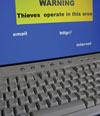

Security is a serious concern in organisations all over the world, and that includes the healthcare sector.
Hospitals are public areas storing valuable medical resources, as well as confidential patient information, making them vulnerable targets for fraud and theft. In addition, the safety of both patients and staff is also imperative.
In the healthcare industry, technology has proved to be a great tool in uncovering fraud, enhancing service delivery and providing efficient identification mechanisms for both healthcare professionals and patients. The use of technology is actively demonstrated in the number of healthcare information systems available as well as innovative technologies used in healthcare such as health smartcards.
Service delivery is an important aspect in healthcare where the patients require services rendered to them in the form of consultations, medications and sometimes follow-ups. The back-end systems are concerned with the effective administration of those services through dispensing of medication, claims processing and, sometimes, the provision of healthcare in offline environments.
According to an article in the Financial24 journal released in August 2008, a KPMG Medical Scheme Anti-Fraud survey reports that fraud in the private South African healthcare industry is estimated at 10% of the annual payouts, amounting to R6 billion per year. This fraud is attributed to the exploitation of loopholes in healthcare systems and processes, and is committed by either its members or healthcare professionals. It can be speculated that the 10% figure would apply to the public health sector as well.
While there is no single answer to resolve the challenges encountered in the healthcare industry, technology provides tools that greatly assist in addressing those challenges. Technology can be applied in several ways and this article presents a few examples.
Reliable identification
Reliable identification of patients and healthcare professionals ensures that medical attention is given by the right healthcare professional to the right patient. Fingerprint biometric technology has been in use for many years and has been proven as reliable and accurate.
Fingerprint authentication provides a mechanism to ensure that patients are correctly identified and that the right medical attention is provided to them. This is especially true when it comes to chronic patients. On the other hand, fingerprint authentication of healthcare professionals enables proper identification as well as the potential to create audit trails for future reference. Smart cards are the ideal devices to contain fingerprint data as they provide mechanisms to perform fingerprint authentication in an autonomous manner, i.e. without the reliance of external processing.
Offline environments
Offline environments are defined as environments where electronic connectivity is not present. In such environments, the use of smartcards has proved most useful. In the specific case of the healthcare environment, the use of smartcards can be extended from fingerprint authentication to the storage of relevant medical information to enable services to be rendered without the requirement to consult an online server. On the other hand, other types of intelligent devices, such as biometric terminals, can be used to store medication information and conduct home visits. This enables services to be rendered in the most remote areas and definitely enhances service delivery as critically ill patients do not need to travel to a hospital or clinic, but can obtain their medication at home.
Control
Smartcards, fingerprint biometrics and biometric terminals can all be used to not only enhance service delivery but provide control methods that assist in closing loopholes in processes. The French health card, Sesame-Vitale is such an example. The card was introduced to facilitate claims processing, it facilitates the dispensing of medication by creating a consolidated network of patients, pharmacists, doctors and nurses. All are identified via their smart health cards and mobile terminals are used to attend to critically ill patients.
Physical access control can also be provided by creating logical zones within a healthcare facility. Again, in this case, fingerprint technology coupled with a smartcard can be used to create such an environment.
For details contact Ideco Biometric Security Solutions, +27 (0)11 745 5600, [email protected], www.ideco.co.za, or Sagem Security South Africa, +27 (0)11 286 5800, [email protected], www.sagem-securite.com
| Tel: | +27 12 749 2300 |
| Email: | [email protected] |
| www: | www.ideco.co.za |
| Articles: | More information and articles about Ideco Biometrics |

© Technews Publishing (Pty) Ltd. | All Rights Reserved.